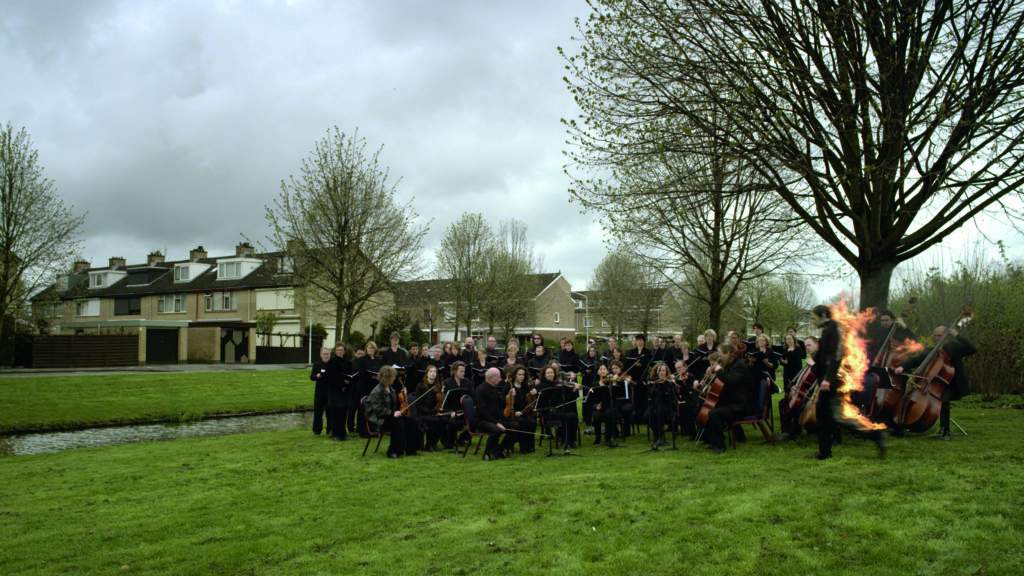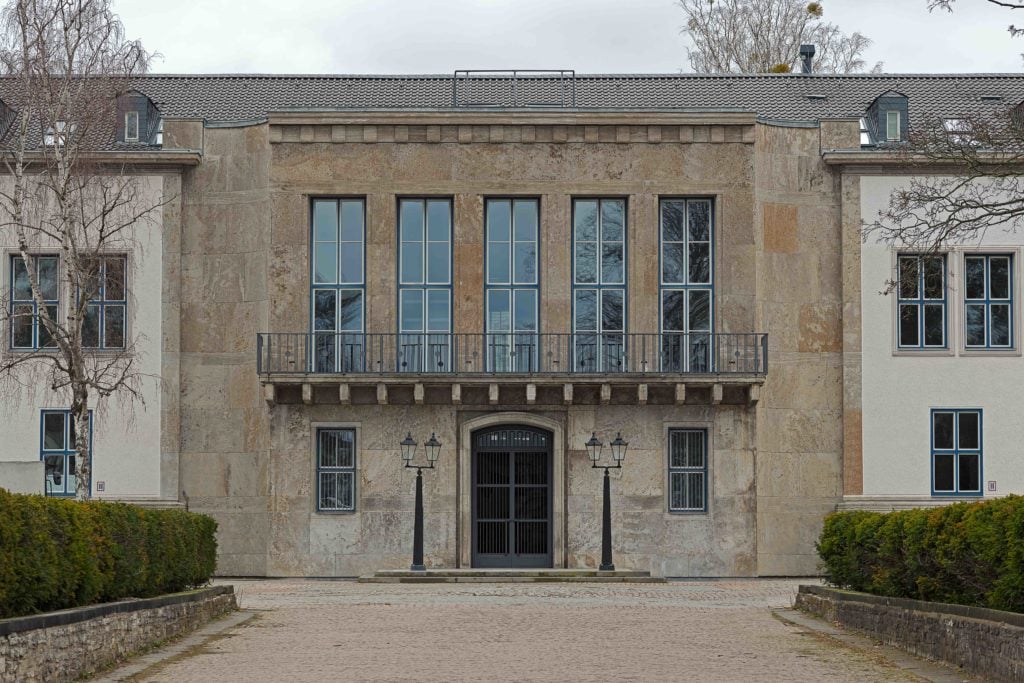On View
A Berlin Software CEO Will Turn a Cold-War Hotspot Into a Home for His Art Collection
Markus Hannebauer is transforming the former headquarters of the US Army in Berlin into a center for time-based art.

Markus Hannebauer is transforming the former headquarters of the US Army in Berlin into a center for time-based art.

Kate Brown

A Berlin software entrepreneur is opening up his art collection to the public for the first time. Markus Hannebauer will show works from his rapldly growing collection of mainly time-based art in a former military building on the outskirts of the German capital.
Called Fluentum, the new space will be in Dahlem, and it is due to open on April 25 alongside Gallery Weekend Berlin. The new space will be inaugurated with a solo exhibition by the Dutch performance and video artist Guido van der Werve.
The backdrop promises to be nothing short of remarkable. Hannebauer got his hands on the former World War II base that became the headquarters of the US Army. It played a vital role during the famous Berlin Airlift (1948-49), the first major incident during the Cold War when vital supplies were flown into West Berliners during Stalin’s blockade. The US Army pulled out in 1998.
The 6,460-square-foot venue is spread over two floors that have been extensively restored and renovated in the last three years—both will be used for a regular exhibitions and a talks program.
Unlike other collectors with Berlin spaces, Hannebauer is actually from the city. “Discovering this very special former military building in my birthplace was a lucky find. Working with the dark and bright facets of this building is a challenge for me as a collector, as well as for the international artists that will show their works here,” he tells artnet News.
The CEO and co-founder of the company think-cell, he made his fortune creating software to boost PowerPoint presentations.

Courtesy Fluentum.
Fluentum joins a growing number of exhibition spaces founded by major collectors in Berlin. Julia Stoschek opened her space in 2016, which is also focused on time-based media. It joined the Feuerle Collection and the Boros Collection, which are both housed in former World War II bunkers. After Gallery Weekend, Fluentum will be open by appointment only. The rest of Fluentum’s program for 2019 has yet to be announced.
For his exhibition, Van der Werve is presenting several pieces from his ongoing Numbers series, in which the artist plays out winding narratives that often put his body under extreme duress, whether hiking mountains, running marathons, setting himself on fire, or getting intentionally hit by car. For Number Nine, which will be on view, the artist stood and turned counter clockwise on the geographical North Pole, slowly rotating his body there for 24 hours.
The collection is also currently assisting the artist in the production of his newest piece, Number eighteen, which examines artistic inferiority and the fear of death. It reflects on his experience when in 2016 when he had a life-threatening bicycle accident in Berlin.
Hannebauer began collecting just under a decade ago while visiting the video art fair LOOP in Barcelona. He says he was immediately taken by the powerful effect that immersive artwork can have over an audience. “The first work I bought was Secret Machine by Reynold Reynolds. At that time, it had an uncanny attraction for me, it was somehow baroque and powerful,” Hannebauer says. “You can often find a way into a field through something that really stirs you and triggers a strong reaction.” Since then, his collecting has shifted its focus towards more conceptual video art; by now, it includes work by Ming Wong, Mario Pfeifer, Andreas Gursky, and Omer Fast, among others.

Still from Number 9: The day I didn’t turn with the world by Guido van de Werve. Courtesy the artist and Fluentum.
“To me, video art seems more complex than painting, sculpture, or photography because it adds the aspects of time and sound to the expressive means of an artist. Good video artists use these additional means wisely to convey their concepts,” says Hannebauer in reflecting on the medium he’s come to love. “At the same time, video art tends to be more ephemeral than other art because it is largely digital today, and I as a collector and software entrepreneur well relate to the idea of owning the right to show something over owning a physical object.”
The collector’s decision to go public seems to be far from a vanity project (it’s notable that he choose not to name the space after himself). Rather, Hannebauer wants viewers to focus on the urgency of time-based media: “I wasn’t keen to immediately go public with my collection, but I do believe it is important to show video in such a way that the works have a life outside of a single screening. I’m not someone who collects to archive the works and treat them like books on a shelf.”
Fluentum will be open from April 25 to April 28, 2019 11–6 p.m. and afterwards by appointment. It is located at Clayallee 174, 14195 in Berlin.